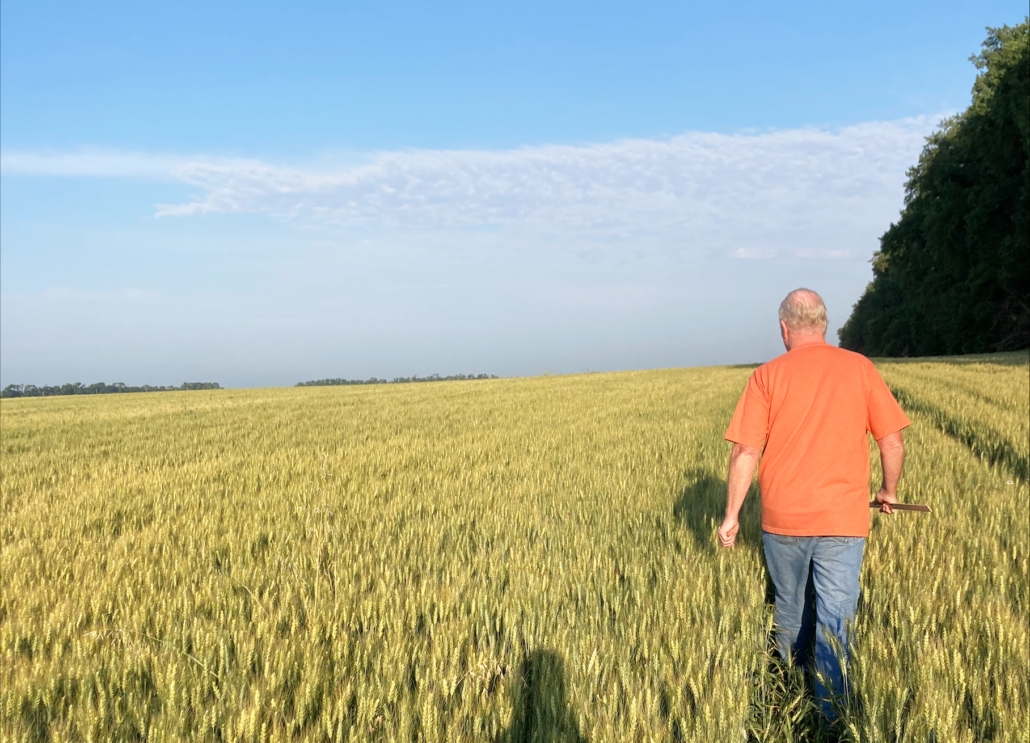Spring Wheat and Durum Tour Provides Insight, Interaction for U.S. Wheat Industry Stakeholders

USW Director of Trade Policy Peter Laudeman during one of the many stops on the 2023 Spring Wheat and Durum Tour across North Dakota.
Participating in the Wheat Quality Council’s Spring and Durum Wheat Tour for the first time, U.S. Wheat Associates’ (USW) Peter Laudeman was eager to discover what he could learn about the 2023 crop across an important section of the Northern Plains.
He wasn’t disappointed.
The tour, which included examination of more than 300 spring wheat and durum fields in North Dakota and western Minnesota, was supplemented by information about the timing of the current crop, along with the weather patterns that affect it.
“Overall, we saw a wide variety of crop conditions, with the conditions and maturity largely depending on planting dates,” reported Laudeman, USW’s Director of Trade Policy. “In general, the later planted wheat looked like it may have better potential as long as it has enough time to mature.”
Production. Process and People
Not only did Laudeman experience differing field conditions on the Wheat Quality Council’s Spring Wheat Tour, he was also able to participate in the analytics: those on the tour were asked to write down details and measurements from each field, with those measurements used to help formulate yield estimates.
Importantly, he was also able to interact with a sizeable cross-section of the U.S. wheat industry.
“There was a diverse variety of people from across the wheat value chain, many who were getting into wheat fields for the first time,” Laudeman explained. “It was especially great to see so many participants from the USDA, including representatives from the Foreign Agricultural Service (FAS) who will be able to use their experience with the tour as a concrete proof point in their work with overseas customers for U.S. commodity exports.”

The tour included the examination of more than 300 spring wheat and durum fields in North Dakota and western Minnesota. It was supplemented by information about the timing of the current crop, along with the weather patterns that affect it.
2023 Crop Looks ‘Average’
The three-day tour wrapped up July 27 with presentations in Fargo by the Northern Crops Institute (NCI) at North Dakota State University (NDSU). Overall, reports from the tour indicate North Dakota wheat farmers later this summer will be harvesting an average crop with good quality. The tour estimated the average hard red spring wheat yield at 47.4 bushels per acre, a bit below the 2022 tour estimate of 49.1.
Tour is Important Tool
Wheat Quality Council Executive Vice President David Green, who organized the tour, said the event is all about providing insight and education.
“Along with calculating and estimating the crop’s potential, we also aim to educate people who are new to the industry, or even those in the industry who have not experienced this process,” said Green.


